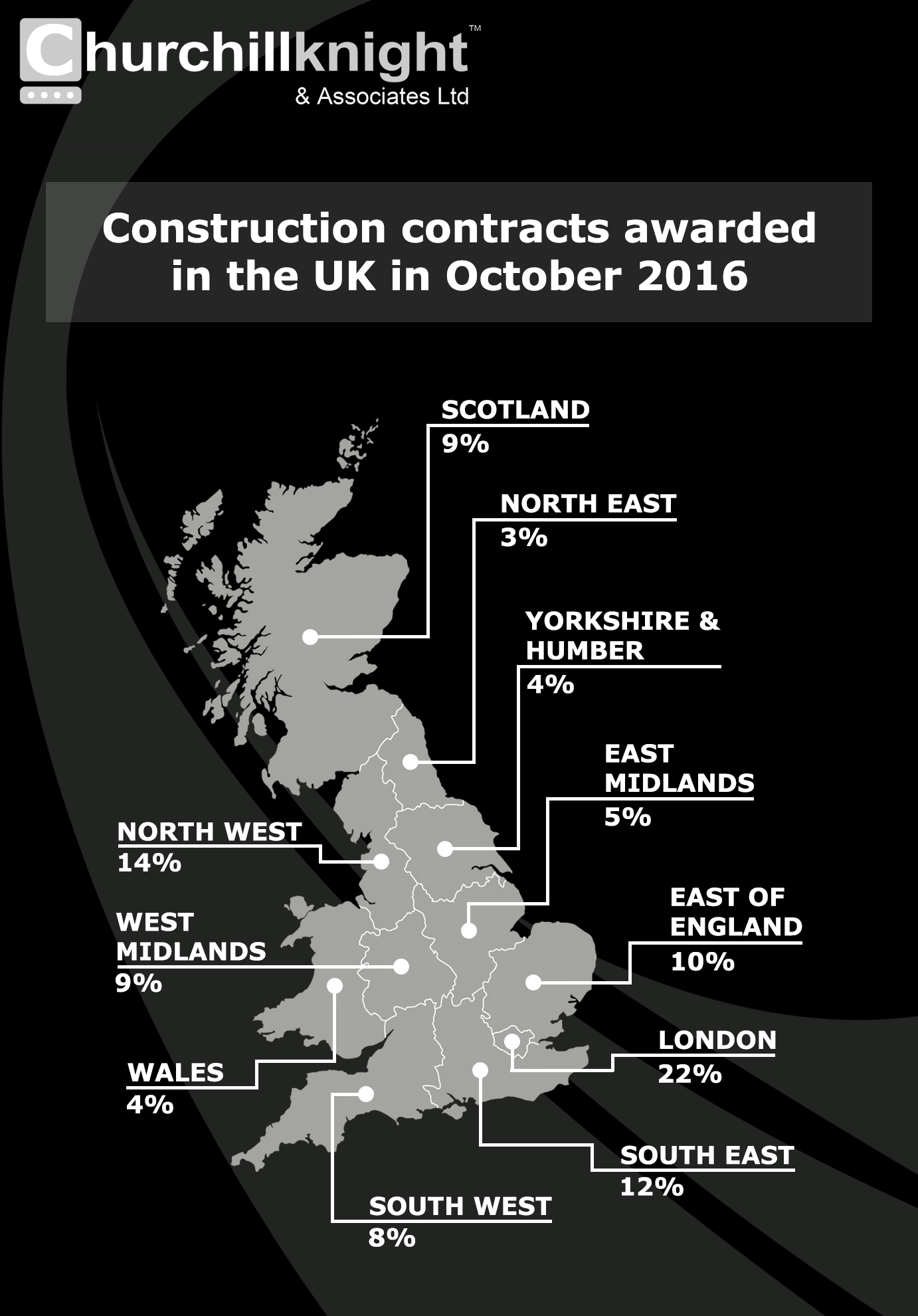Share this article

What contract roles are available for construction contractors right now? What will the future hold for the construction industry? The industry has experienced times of tough economic conditions and declining growth for much of 2016, but recent figures show some resilience and improvement.
Find out what the latest construction industry trends are and where and which sectors you could expect to find contract roles now and into 2017.
The Office for National Statistics (ONS) reported that construction volumes fell 1.1% in the July to September quarter, stating this was the industry’s weakest recorded performance in four years.
However, there appears to be light at the end of the tunnel according to construction industry research firm Barbour ABI. Their latest report states that construction projects increased 5.9% in October 2016 alone compared to September. This was the highest level of activity seen for seven months.
While 2016 output figures still lag behind 2015, perhaps we will be able to see further improvement moving into the first and second quarter of 2017, especially with Chancellor Philip Hammond’s pledge to invest in various infrastructure projects, as announced in Autumn Statement 2016.
Which regions have the highest construction activity?
In October, 22% of all construction contracts awarded were, unsurprisingly, in the London and Greater London area. Other regions that had a high percentage of awarded construction contracts in October included the North West with 14%, the South East with 12%, the East of England with 10%, and Scotland and the West Midlands with 9%. See the infographic below for more information.
What type of construction projects are on the rise?
Housing activity is on the rise and was cited as a key driver for October’s growth in the industry. As such, contractors in the construction industry should see an upward trend in contract roles becoming available in housing construction.
A senior economist at IHS Markit commented that civil engineering and commercial building ‘struggled for momentum in October’. This is partly due to investors’ delayed decisions on projects and uncertainty surrounding Brexit. However, as we go into 2017 we could see these areas start to stabilise and strengthen as housing construction has.
At Autumn Statement 2016, Chancellor Philip Hammond announced a £23 billion National Productivity Investment Fund. Of this, he pledged £2.3 billion for a Housing Infrastructure Fund to be used for infrastructure projects such as road and water connections to support 100,000 new homes in much-needed areas. £1.1 billion will also be put towards improving England’s local transport networks, including congestion reduction and upgrading local roads and public transport.
The government’s investment in infrastructure will most certainly generate contract roles for construction contractors in the UK. The investment will hopefully meet the needs of the growing population, and also stimulate growth and improve output in the construction industry.
How do you see the future of the construction industry? Do you see improvement in the short and/or the long term? Give us your thoughts below.
If you are taking on or have taken on a contract role in construction that requires you to be registered to the Construction Industry Scheme (CIS), we can help with your invoicing, payroll and accounting needs. We can also take away the confusion of paying tax as a construction worker by advising you every step of the way. Find out more about our Construction Industry Scheme service.
We're regularly adding new, helpful content
The Churchill Knight blog is regularly updated with helpful content for contractors and freelancers – especially articles that answer the most frequently asked questions about umbrella companies! Please pop back shortly to see the latest articles written by Andrew Trodden (Marketing Manager) and Clare Denison (Marketing Executive).

